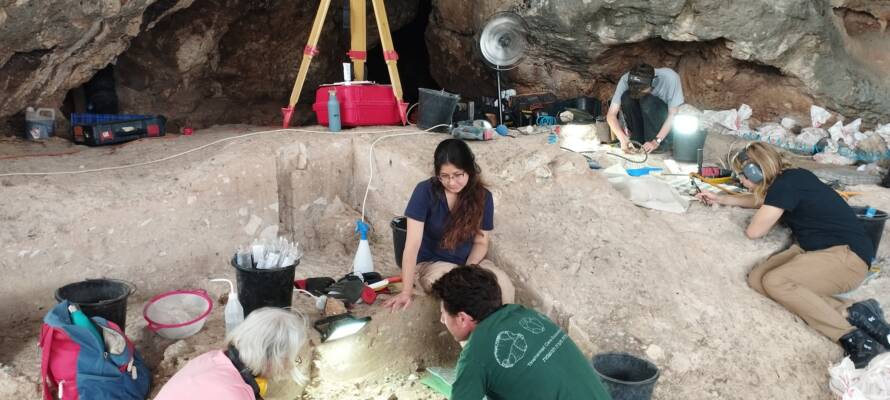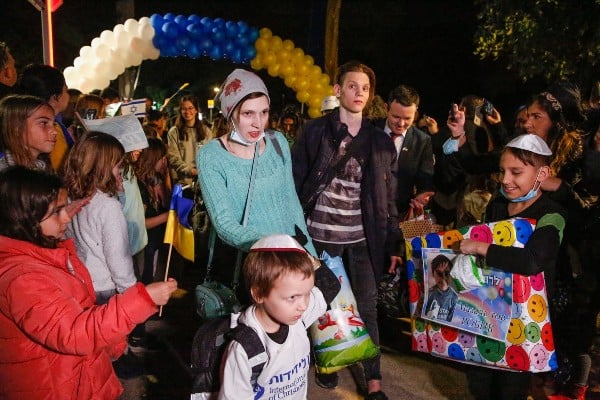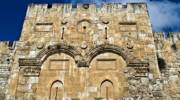Were these early human groups rivals, peaceful neighbors, or perhaps even collaborators?
By Pesach Benson, TPS
A groundbreaking discovery in central Israel is reshaping science’s understanding of early human history.
For the first time, researchers have uncovered evidence that two distinct human species, previously thought to have lived in isolation, actively interacted with each other.
These interactions — spanning technology, daily life, and even burial practices — suggest a rich cultural exchange and social complexity that challenges long-held assumptions about the past.
The findings, published in the peer-reviewed Nature Human Behaviour, reveal the Levant as a crossroads where early human groups not only met but influenced each other’s development.
The research team, led by Prof. Yossi Zaidner of the Hebrew University of Jerusalem, Prof. Israel Hershkovitz of Tel Aviv University, and Dr. Marion Prévost of the Hebrew University, began excavating Tinshemet Cave in central Israel in 2017.
Their ongoing work has unearthed several human burials, the first Middle Palaeolithic period burials discovered in over fifty years.
These burials, along with other key archaeological findings, shed light on the nature of Homo sapiens-Neanderthal interactions, which have long been a subject of debate.
Were these early human groups rivals, peaceful neighbors, or perhaps even collaborators?
Neanderthals were a robust and stocky species that thrived in cold climates. They had prominent brow ridges, wide noses, and large ribcages, adaptations that helped them survive harsh conditions.
Neanderthals were skilled toolmakers and evidence suggests they had complex social structures, cared for the elderly and injured, and possibly engaged in symbolic practices.
However, their cognitive abilities were generally considered less advanced than those of Homo sapiens.
Neanderthals went extinct around 40,000 years ago, likely due to a combination of climate change, competition with early humans, and interbreeding.
In contrast, homo sapiens, developed more advanced cognitive skills, including abstract thinking and complex language, and were taller and more slender than the Neanderthals.
Homo sapiens created a broader range of specialized tools, including art, sculptures, and other symbolic objects, marking significant cultural and technological advancements.
They organized in larger and more complex social groups, adapted to diverse environments, and spread across the globe.
According to Zaidner, the research suggests a much more nuanced view of the relationships between Neanderthals and homo sapiens.
“Our data show that human connections and population interactions have been fundamental in driving cultural and technological innovations throughout history,” said Zaidner.
By examining four key aspects — stone tool production, hunting strategies, symbolic behavior, and social complexity — the study argued that the interactions between Neanderthals, Homo sapiens, and other human populations were rich and varied.
This exchange of knowledge likely led to cultural homogenization across different groups, fostering greater social complexity and behavioral innovation.
One of the most striking findings at Tinshemet Cave is the appearance of formal burial practices, the researchers said.
These customs, which first began to appear around 110,000 years ago in the Levant, are seen as one of the earliest signs of social complexity.
“The use of ochre for body decoration, likely to signify social identities, and the presence of burial practices point to shared cultural rituals,” Prévost explained.
The extensive use of mineral pigments, especially ochre, may have been used for body painting or decoration, potentially to define group identities or signify social distinctions.
Additionally, the human burials at Tinshemet Cave are clustered in a way that suggests the site may have functioned as a burial ground or even a cemetery.
The presence of stone tools, animal bones, and ochre within the burial pits hints at early beliefs in the afterlife, further indicating the cultural significance of these rituals.
“This research highlights the role of human connections in shaping the trajectory of early societies,” Zaidner said.
The region’s geographic position at the crossroads of human dispersals played a key role in facilitating these interactions.
Prévost noted that climatic improvements during the Middle Palaeolithic period led to a more hospitable environment, increasing the region’s carrying capacity.
This, in turn, spurred demographic expansion and greater contact between Homo sapiens, Neanderthals, and other human groups.
“These findings paint a picture of dynamic interactions shaped by both cooperation and competition,” said Hershkovitz.
Bring Purim Joy to Israeli Victims of War and Terror
Join us in providing Israeli victims of war and terror with much needed comfort, blessing and holiday joy.
Families have been destroyed by the horrific Hamas massacre of October 7th and ongoing terror attacks. There are many orphans that need our love, compassion and support!
Brighten their Purim holiday by sending Purim food baskets, yummy treats, personal notes and toys for the children.
CLICK HERE TO SEND YOUR PURIM GIFT & PERSONAL NOTE TO THE VICTIMS























